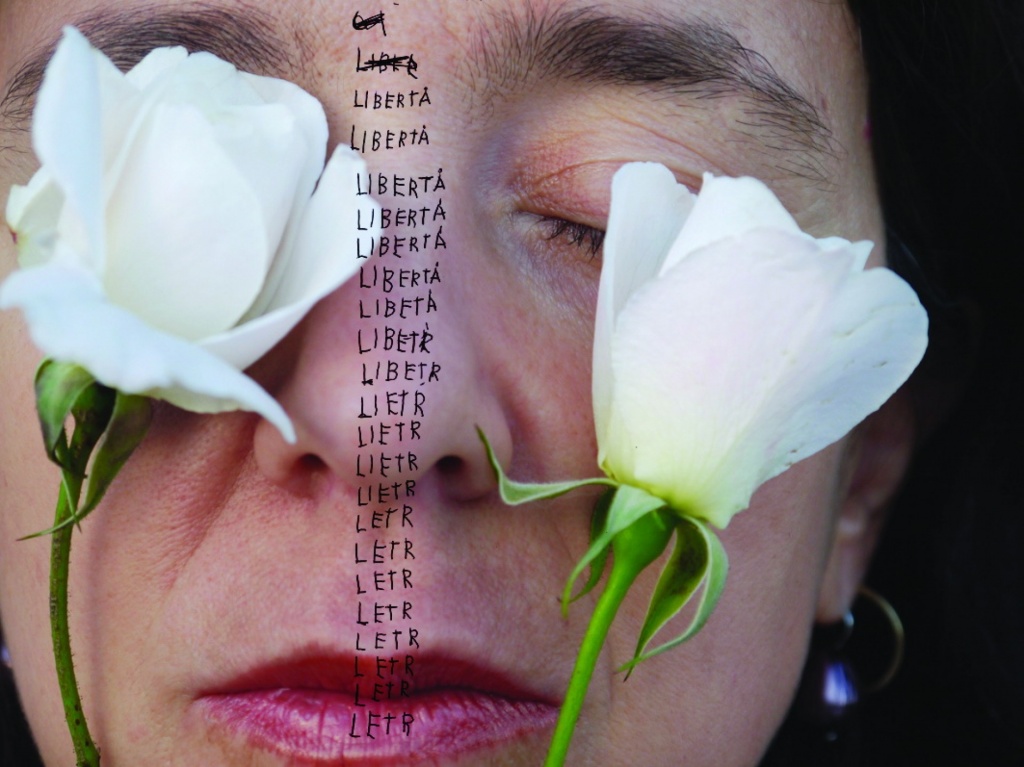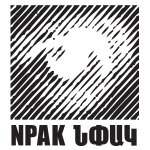REMOTE SENSING
A Group Exhibition of Artists from Italy
Martina Corgnati, Curator
“Remote sensing” is the acquisition of information about an object or phenomenon,
without making physical contact with the object. In modern usage, the term generally
refers to the use of aerial sensor technologies to detect and classify objects on Earth.
It has also to do with “Remote Access Connection”, the function that allows access
to various types of server-hosted desktops and applications. In other words, it lets an
individual unit, such as a PC, to get in touch with a server, a source of information
or simply another individual unit, without getting physically in contact with it.
In the case of this exhibition, a number of Italian artists, physically located in Italy,
have been asked to activate a “remote sensing” function in order to detect and express
in their practice what they intend, feel and mean by “Armenia” in any possible senses
or implication of the word.
On the other hand, “sensing” has to do, on a etymological level, with “sense”,
“meaning” but also “feeling”: it implies a feeling towards Armenia from the artists’
side. Such a concept, strange as it can sound, tackles, however, a widespread attitude
of our contemporary society that involves Italy as well as Armenia and the rest of
the world. A tendency of looking at things, news, chronicles and even other people
through a monitor screen, through internet and the web, without moving from home.
This attitude has already created a world of “avatars” in which things live a parallel
life, often without touching the “real” one lost in the distance. The phenomenon is
well known and even obvious among philosophers and communication scientists, as
well as journalists. From the realm of information it is now spreading towards and
inside the world of art. More and more often, critics, curators and art lovers do not
see or get in touch with the actual art pieces, but know them only indirectly, through
the web, which recently has started letting people to visit entire exhibitions on line.
The same thing is happening in tourism and geography and other cultural domains.
People “travel” through their PC, enjoy images, routes and even experiences, which
exist only virtually. Remote Sensing has become the general way of learning, knowing,
forming opinions about things. That is why it is not meaningless to have chosen
it as the topic of this exhibition. Would it ever change again? Would it come back
and allow us to distinguish clearly between reality and imagination? We don’t know.
In the meantime, investigating how “remote sensing” can function seems to be sensible
and even imperative.
Some of the artists, such as Claudio Gobbi, have been selected because from far
away they had already done specific art-pieces somehow related to Armenia. Others
enthusiastically accepted the idea to develop a work for this purpose, behaving exactly
as a satellite pointing at a specific area of the world.
Ten artists included in this show belong to several distinct generations and use different
media. Among them, painters as Agostino Ferrari (Milan, 1938), who after
having devoted his entire life exploring the aesthetic and semantic implications of
“sign”, turned enthusiastically to Armenian alphabet. Gabriella Benedini (Cremona,
1932) for fifty years has engaged in mixed media art, drawing, and artists book. In
the Armenian cultural atmosphere, with which she is not familiar directly, she found
the ideal environment to develop a project that allowed her to intermingle her need
for beauty and sophistication, with original mix of materials and poetry.
Mario Sillani Djerrahian (Adis Abeba, 1940) is of Armenian origin, but, as many
sons of the diaspora, was born elsewhere and is not familiar with Armenia as a nation.
However, the Armenian landscape is an old and recurring topic in his work, a
dreamed, evoked, conceptualized landscape that the artist conveys through photographic
collages and installations.
Dario Ghibaudo (Cuneo 1955) has been dealing for years with reflections and
afterthoughts around human and animals’ nature. For this project, he has chosen an
Armenian proverb, wrote it and made the words sink into soil, into earth, in order to
make them meaningful.
Nicus Lucà (Torino, 1961) has been creating “paintings” made actually by pins.
For this occasion, he made a portrait of Georges Ivanovič Gurdjieff, the well-known
half-Armenian philosopher and mystic, whose teachings attracted deeply the artist’s
attention.
Claudio Gobbi (Ancona 1971) in his ongoing Armenie Ville project, focuses on
the strength of Armenian architecture, recognizable and capable of conveying identity’s
values regardless the distance from its original source (Historical Armenia),
its epoch, its actual location. The artist is collecting images of Armenian churches
all over the world, as a sort of “Aby Warburg’s Atlas of memories”.
In his video, Danilo Correale (Naples, 1982) investigates the Turkish historical
tradition of cymbals’ manufacture, characterized by an exquisite and peculiar sound,
discovering that it was founded and made by members of the Armenian minority in
Istanbul.
Agnese Purgatorio (Bari, 1964) has made a video-installation that associates the
symbolic meaning of the rose flower, its origin, Caucasus mountains and Armenian
highlands, and the destiny of the Armenian women forced to walk all across the desert
up to Der-El-Zor.
Andrea Nevi (Foligno, PG, 1985) & Eleonora Beddini (Foligno, PG,1983) compare
Aurora Mardiganian’s story with Anna Frank’s, investigating details and situations
of young people, maids entrapped in shelters that turned into cages and put
them in the hands of their persecutors, the Nazis and the Turks.
Eventually, Claudio Beorchia (Vercelli, 1979) has selected a typical Armenian
“product” such as wool, in order to create a metaphorical object: a giant knot, whose
strands tend to widen in space but cannot be disentangled without making the knot
even harder and tighter. The knot, that includes strands colored by all the colors of
Armenian flag, is, according to the artist, a mirror reflecting the situation of a people
tied to its own identity.
The exhibition Remote Sensing includes videos, photographs, drawings and works
on paper, installations.

























